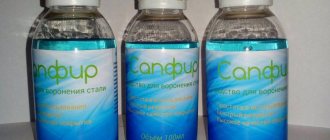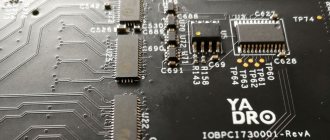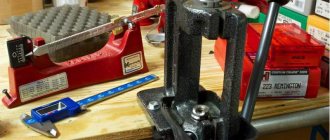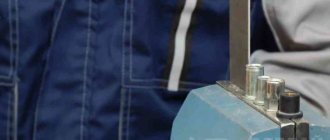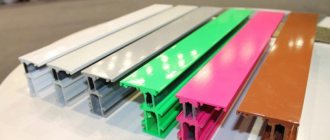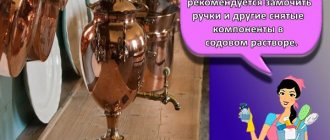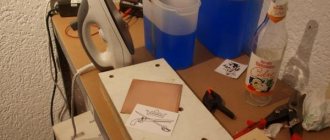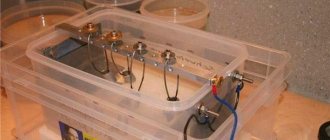Due to its beautiful color and shine, silver is often used in jewelry. The material is characterized by high hardness, good anti-corrosion properties and resistance to aggressive environments. To give objects made of other materials the same properties, a thin layer of metal is applied to their surface. Silvering at home can be done by immersion, galvanic, chemical and other methods. It is important to take precautions when carrying out this procedure.
What is this procedure and why is it needed?
Galvanization is an electrochemical process of decorative and protective painting of products with metals:
- silver;
- gold;
- zinc;
- copper;
- chrome;
- nickel
Helps strengthen the product and protect the surface of objects from corrosive processes, making their color attractive. The effect is achieved due to the diffusion (penetration of molecules) of the metal into the surface layer of objects, which allows the silver film to be securely fixed.
What materials are suitable for the job?
First you need to decide what raw materials are available for making mirror items. The basis for the reflective surface should be metal, and different types of materials from this group are suitable. Silver is considered the ideal option - it does not deform and is not prone to corrosion. However, the price of a finished item will not be very affordable, so to create a homemade item, it is better to look for another option.
Important! A mirror can be made by spraying bronze or steel. They will also provide excellent image quality without breaking the bank too much.
The structure can also be made using aluminum, including aluminum foil. The disadvantages are the short service life of the product and limited shades, but aluminum is very easy to work with and is easy to polish.
The essence of the process
The principle of electroplating is the application of one metal to another by electrolysis.
It takes place in several stages:
- The correct composition is selected.
- A pair of anodes is placed from the “plus” of the electric current source into the electrolyte (liquid with high conductivity).
- The workpiece is immersed between the anodes, then connected to the “minus” of the electric current source.
- The chain is closed.
In jewelry, silver electroplating is used for decorative purposes. It is in great demand in industrial sectors. If special reagents and materials are available, electroplating can be carried out at home.
The essence and practical purpose of silvering
The essence of the procedure is to apply a thin silver layer to the object. Products made of glass, plastic, copper, iron, brass, ceramics, aluminum, etc. can be subjected to similar processing.
In addition, in industrial conditions, silver plating is performed in special drums. The procedure is most often used to create costume jewelry, tableware, and interior items.
Silver plating is often used to coat reflectors, automotive parts, incl. headlight reflectors, as well as surgical and dental instruments.
The practical use of silver is due to the fact that it has the following properties:
- has high hardness, reaching 90 kg/mm²;
- prevent the formation of rust and oxides;
- conducts electric current;
- reflects light rays well;
- has a disinfecting effect;
- has high thermal conductivity, etc.
The silver layer protects the product from premature oxidation. Even in high concentration sulfuric acid, the dissolution of this metal occurs only when heated to 100°C.
Advantages and disadvantages
Pros:
- high penetrating ability of substances;
- galvanic coating increases the strength of the product;
- You can treat a surface of any complexity;
- uniform layer thickness, which can be adjusted;
- increasing decorative and reflective properties.
Minuses:
- low environmental friendliness;
- risk of harm to health;
- work only with materials that conduct current;
- high energy intensity.
Application of paste
Silver plating is an excellent and inexpensive type of improvement that can be used to plating silver on products of any class. The key advantages include instant action, and the product is suitable for both dishes and buttons, awards, figurines and more. The paste is mixed until smooth, the part to be treated is wiped with solvent, and coated with a thin layer of paste. Next, time is given to dry, and the remaining silver is washed off. For a larger layer thickness, everything can be repeated 2-3 times. If it dries out, you can dilute the composition with water.
This procedure can be used to silver plate brass, copper and other alloys, and this does not require specific skills or complex reagents. The purchase and use of such a substance is possible without special permission; it is open for free sale and is excellent for beginners in home use. As for quality, the products will not be inferior to analogues made by other methods.
Is it possible to plate silver with gold?
Gold plating is electroplating. To gild silver items, certain equipment is required. In addition, the labor-intensive process is an expensive service, hardly available at home: when covering the material with aurum, high-grade metal (750-999 samples) is used. It is best to go to a jewelry workshop to have the item processed by a professional.
Foil mirror
There is a simple and safe method for making a mirror, which is accessible even to beginners and does not require the use of chemicals. To work, you will need a piece of the thinnest aluminum foil that is available.
You will also need the following accessories:
- frame made of wood, cardboard, plastic or any other material;
- tape and sandpaper;
- alcohol;
- glass of suitable size.
Mirror made of glass and foil
First, the glass is cut so that it fits the frame well, and the edges are carefully sanded with sandpaper. The surface of the material is treated with alcohol on both sides to degrease. Place perfectly aligned foil on one side and carefully secure it along the edges and corners with tape. Frame the finished product with a frame and decorate it at your discretion.
Features of silver plating at home
Working with chemicals is a very dangerous activity, even for professionals. Accuracy must be observed in all actions related to the preparation of solutions and equipment, otherwise experiments with electroplating may result in loss of health.
Necessary materials and equipment
List of what is needed to carry out the procedure at home:
- protective equipment;
- power supply for a current of 30-50 A, with an ammeter, smooth adjustment and stabilization of current strength;
- 2 pieces of cable for connecting the anode and the part to the power supply;
- plastic basin;
- electric stove;
- glass or plastic dishes with a tight lid;
- electronic balance;
- thermometer with a range of 10…130 °C.
Reagents needed for electroplating:
- 6 l 36% concentration of sulfuric acid (acid for refilling batteries);
- 2 kg sodium chloride (table salt);
- 100 g sodium bicarbonate (baking soda);
- 5 kg of sodium nitrate (sodium nitrate);
- 1 kg of sodium silicate (liquid glass, silicate office glue);
- 2 kg sodium carbonate (soda ash);
- 200 g of potassium ferric sulfide (yellow blood salt);
- 15-20 g of pure silver scrap;
- bottle of detergent.
Precautions when working with hazardous chemicals
Before carrying out the procedure, you should choose a suitable place. It is best to work with hazardous substances not at home, but in a garage or shed. A prerequisite is sufficient ventilation and the ability to organize grounding.
Of course, it is good to have special equipment for working with chemicals that protects the entire body. However, in its absence, the obligatory condition will be the purchase of the following items:
- respirator masks;
- transparent glasses;
- rubber gloves;
- an apron made of thick oilcloth.
During work, you should not eat or drink water to prevent harmful components from entering your stomach. If the procedure is carried out in the kitchen (which is very undesirable), then only if there is a hood without a filter.
All this is necessary, since electroplating involves the use of concentrated acids and the release of toxic gases. Therefore, you should not neglect safety.
Metal preparation
In order for the metal to cover the item with an even layer and reliably protect it, it should be carefully processed. If there are protrusions and corrosion, it is necessary to clean the object with emery cloth and sand it, then degrease the even surface of the object:
- heat the sodium phosphate solution to 90 °C;
- lower the item being processed;
- hold for 3-10 minutes.
Galvanic silver plating
This is another system used by private individuals. The operation can be performed with a graphite rod. You will also need a power supply and an electrolyte designed for silvering things at home. It includes 4 components:
- liter of distilled liquid;
- 15-25g yellow blood salt and soda ash;
- 10-15g silver chloride;
Each element is dissolved separately in boiling water, then mixed and boiled for about 2 more hours. The silvering solution is stored in a plastic container with a well-closed lid and in a dark place. Before use, it is shaken to raise the sediment and poured into a glass container. The main thing is not to forget about protective equipment and carry out manipulations with rubber gloves.
Electroplating silvering at home
Then a graphite rod is partially immersed in the vessel (can be removed from the battery) and the anode is connected to it. The part itself is connected to the cathode and lowered into a reservoir with the substance. It is also important to degrease and clean it (the part). The voltage on the block is set from 5 to 12 volts and the higher the current, the faster the galvanic silvering. However, the thickness of the layer will not be thick enough. This way you get a good layer that adheres tightly to the surface. But its properties completely depend on the purity of coins, jewelry, cufflinks and more.
The remaining composition can be reused, the main thing is to follow the storage rules.
Ways to do it at home
All products that do not have electrically conductive properties must be coated with graphite. The silver electroplating process, although very interesting, uses reagents that can cause harm to health, property and the environment. Therefore, before carrying out the procedure, you should choose the right place to ensure complete safety.
True, not all methods are like this. Let's look at popular ways to coat things with silver at home using electroplating.
Degreasing composition
Before starting the process, the products being processed must be degreased. To do this, you can use the recipe (values are based on 1 liter of water):
- 120 g sodium hydroxide;
- 45 g soda ash;
- 4 g soluble glass.
Heat the solution to 80...100 °C and hold for 15-60 minutes (until all contaminants are removed).
Chemical method
This type of silver coating at home consists of finishing with a photo fixative solution. Mode of application:
- mix hyposulfite with formaldehyde in proportions of 1 l/10 drops;
- 5 ml of ammonia is added;
- clean the item from grease and dirt;
- immerse in the finished substance for 1.5 hours;
- rinse, dry, wipe with soft fleece cloth.
The use of this method is considered gentle on health, since there is no strong release of chemical fumes. However, you should still take precautions to avoid getting a chemical burn.
Below watch a video about the chemical method of applying silver to products:
Using special pastes
Applying silver is a type of electroplating. The process does not require special equipment or work with hazardous chemicals, is suitable for products of any class, and the effect is achieved instantly. You can make a thick layer by performing the procedure 2-3 times:
- degrease the part;
- apply the paste thinly;
- dry;
- remove any remaining substance with water.
Permission is not required for purchase. The method is perfect for beginners, and the quality will not be inferior to similar procedures.
Silvering with heating of the workpiece
Cooking at home:
- Mix 100 g of argentum chloride with water;
- add 600 g of table salt and cream of tartar;
- Bring to a thick, homogeneous mass.
The resulting paste should be stored in a dark glass container.
Principle of use:
- dilute the mixture (3 tbsp) with boiling water (5 l) in a copper container;
- place the item in the grill for 15-20 minutes.
This method of electroplating with silver will not add brightness. To get shine, you should use another recipe:
- 100 g acetic acid;
- 300 g sulfur salt;
- 4.5 liters of water.
Preparation:
- boil water to 75...80 °C;
- mix the ingredients and add to the liquid;
- put an item;
- cook for 15 minutes.
Immersion method of silvering
Equipment you will need:
- graphite rod;
- power unit;
- electrolyte for electroplating with silver.
Liquid composition:
- 1 liter of distilled water;
- 15 g yellow blood salt;
- 25 g soda ash;
- 15 g silver chloride.
Preparation:
- to boil water;
- mix the ingredients;
- cook for 2 hours.
Store the solution in a dark place and shake before use.
Features of silver coating of different metals
Many metals can be silvered: brass, aluminum, steel and other alloys.
During the process, reactions occur that provoke the release of metallic silver, which is responsible for the creation of the characteristic silver coating. There are a number of features of the silvering process under different conditions:
- The composition of the mixture must be selected based not only on the quality of the product, but also on its further practical purpose.
- Light metals are easier to plating. The coating thickness for parts made of dark material must be at least 15 microns.
- The surface of any alloy must be thoroughly cleaned and degreased before the silvering procedure.
Silvering of copper and copper alloys
Silvering of copper is no different from silver plating of other types of products. Copper is not a capricious metal and can be easily processed. However, it is this type of metal that is most susceptible to the formation of oxides and corrosion, and therefore additional preparatory measures in the form of polishing may be necessary before silvering.
Mirrors made from galvanized cans
It will not be possible to make an old basin shine like a real mirror, but the finished structure will serve as a unique element of the interior and will immediately become the highlight of the room. You can build a set of mirrors from two copies and hang them next to each other in the form of an original composition.
You will need:
- tin basin;
- ready-made mirror (for example, homemade);
- tassels;
- paint of different tones;
- liquid Nails.
Mirror in a basin
Remove the frame from the old mirror, wash it, and degrease it. Liquid nails are applied to the lower surface of the pelvis and a mirror is glued. The framing is done using paint - the “frame” is painted right along the bottom of the basin, bright spots and splashes of other shades are painted on the base layer. The finished mirror is perfect for interiors in country, vintage, retro, loft styles and will serve as an excellent gift for family and friends.
